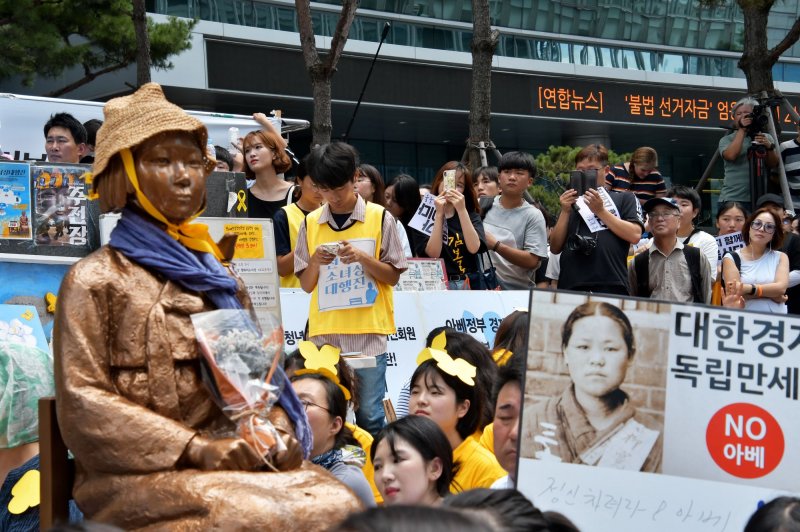EXPLAINER: How would US billionaire income tax work?
By FATIMA HUSSEIN

President Joe Biden speaks about Russian President Vladimir Putin and Russia's invasion of Ukraine after unveiling his proposed budget for fiscal year 2023 in the State Dining Room of the White House, Monday, March 28, 2022, in Washington. (AP Photo/Patrick Semansky)
WASHINGTON (AP) — A “Billionaire Minimum Income Tax” is included in President Joe Biden’s fiscal year 2023 budget proposal — part of the administration’s effort to reduce the federal deficit over the next decade and fund new spending. The proposal “eliminates the inefficient sheltering of income for decades or generations,” the White House says.
During a press conference highlighting the budget on Monday, Biden said one-hundredth of 1% of Americans would be subject to the tax. “The billionaire minimum tax is fair, and it raises $360 billion that can be used to lower costs for families and cut the deficit,” he said.
Whether Congress will approve is a major question as the administration outlines its hope to tax the nation’s highest earners.
Here’s how it would work:
HOW WOULD THE TAX APPLY?
The budget proposes that households worth more than $100 million pay at least 20% in taxes on both income and “unrealized gains”— the increase in an unsold investment’s value. For many wealthy individuals, the administration says, that “true income” never gets taxed since it can be held onto for decades and sometimes generations.
Biden’s proposal would allow wealthy households to spread some payments on unrealized gains over nine years, and then for five years on new income going forward. Stretching payments over multiple years is meant to smooth yearly variations in investment income, while still ensuring that the wealthiest end up paying a minimum tax rate of 20%. In effect, the Billionaire Minimum Income Tax payments are a prepayment of tax obligations these households will owe when they later realize their gains.
This is an extremely nuanced policy. The tax is targeting the ultra wealthy. It’s taxing gains achieved from their wealth, but it’s real and unrealized income rather than simply the underlying assets.
That’s why David Gamage, a tax law professor at Indiana University says “it’s not a wealth tax, it’s an income tax reform.” He says, “This is a minimum income tax that includes the true economic value” of income that can be held for a very long time, he said.
WHO WOULD SEE THE IMPACT?
Roughly 700 billionaires would be affected by the tax proposal, the White House says, estimating that these individuals increased their wealth in 2021 by $1 trillion, paying roughly 8% of their income and unrealized gains in taxes.
“A firefighter and a teacher pay more than double” the tax rate that a billionaire pays, Biden said during Monday’s press conference.
Elon Musk, Bill Gates, Jeff Bezos, Warren Buffet and Michael Bloomberg are just a well-known few individuals who could see the earnings on their holdings taxed under this proposal if it were to become law.
HOW MUCH MONEY WOULD IT RAISE?
According to the White House, $361 billion over 10 years. The budget proposal contains an additional $1.4 trillion worth of revenue raisers, which would include a higher top tax rate of 39.6% on individuals and an increase in the corporate tax rate to 28%.
HOW DO VOTERS FEEL?
The subject of tax avoidance has grown in recent years. A ProPublica report from last June outlined how the wealthiest Americans can legally pay income taxes that are a fraction of what middle income Americans pay on their income. And a Pew Research Center study from last April states that most Americans — some 59%— say they are bothered “a lot” that some corporations and wealthy people don’t pay their fair share in taxes.
A 2017 Gallup poll states that slightly more than six in 10 Americans say that upper-income people pay too little in taxes.
IS CONGRESS LIKELY TO APPROVE THIS MEASURE?
Donald Williamson, an accounting and taxation professor at American University in Washington, said “a couple of years ago, I would’ve laughed out loud. Today it’s conceivable.”
The highest likelihood is through “reconciliation” — a budget process for passing fiscal legislation with a simple majority of Senate votes.
That will require buy-in from West Virginia Sen. Joe Machin and Arizona Sen. Kyrsten Sinema, who have each objected to proposals to tax the ultra-wealthy in the past.
Steve Wamhoff, director of tax policy at the Institute on Taxation and Economic Policy, says the Democrats “have got this reconciliation vehicle that they can use that to pass legislation.”
“This is a step toward a much fairer tax code.”
___
Associated Press writer Josh Boak contributed to this report.









